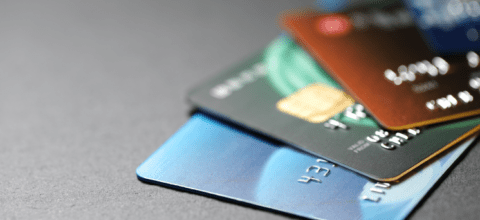While the names and logos of Capital One and Credit One may be similar, these two financial services companies are not the same. Unfortunately, this creates confusion for newbie card applicants who are unfamiliar with the differences between these two card issuers:
| Capital One | Credit One | |
|---|---|---|
| Card options for bad credit | ||
| Prequalify for a credit card | ||
| Better customer service | ||
| Easier payment process | ||
| Automatic credit line increases | ||
| Offers cards with sign-up bonuses | ||
| Easier to graduate to a better card | ||
| Good cards to graduate to | ||
| Terms and conditions are straightforward | ||
| Physical bank branches | ||
| Unsecured card options for bad credit | ||
| Cards are easier to qualify for (including with bankruptcy) |
Capital One is the better option for customers looking to build their credit history. It has credit cards for both consumers and small business owners across all credit scores, not just those with damaged credit. As you rebuild your credit score, you can qualify for more attractive credit cards with higher rewards, better benefits and lower fees.
Additionally, Capital One offers checking and savings accounts, auto loans, business loans and more so it can handle more of your banking needs.
Capital One offers live customer service 24 hours a day, seven days a week for its personal and small business credit card customers. Even when you’re traveling overseas, customers can make international operator collect calls to speak with customer service. If you are near one of its Capital One Cafés or branches, you may also walk into the branch to connect in person.
Capital One accepts payments by mail, online or in a branch. Customers can also establish automatic payments of their credit card minimum due, balance or a fixed amount of their choosing. Additionally, Capital One does not charge “express fees” like Credit One does to expedite payments.
When reviewing credit card options, Capital One terms and conditions are much clearer for its cards compared with Credit One. Although both card issuers comply with federal law that requires a uniform disclosure statement, Capital One is more transparent about its card offers and provides more concrete details about a card’s rates and fees before you apply. This makes it easier for an applicant to decide if a card makes sense for their wallet.
Capital One has more than 20 credit cards with attractive benefits and rewards with no annual fees. Unlike Credit One, Capital One does not charge returned payment fees if your bank rejects your payment. None of the credit cards offered by Capital One charge foreign transaction fees on international purchases.
Consumers who have poor or limited credit often want to increase their credit limit or upgrade their accounts as their credit improves. With its secured credit cards, Capital One may increase your credit limit automatically in as little as six months when you use your card responsibly. Capital One has many credit card options for people of different credit levels, so as your credit score increases, you may be able to apply for a better card.
As your credit score improves, Capital One has a large variety of cards for good credit that you can graduate to. You can find Capital One cards with rewards, benefits and 0% APR offers, depending on what your needs are. Credit One has fewer options, and most of its cards have inferior benefits and earning power compared to Capital One cards.
Both Capital One and Credit One have credit cards for people who have bad credit or are new to credit. These credit cards help consumers get back on their feet by building a positive payment history and tools to help them track their progress. Cardholders who use their cards responsibly may qualify for increases in their credit limits through ongoing reviews of their account.
Both Capital One and Credit One allow you to prequalify for their credit cards. They perform a soft pull on your credit that does not hurt your score. This is a great way to see if you qualify for a credit card before applying and triggering a hard inquiry that could temporarily lower your score.
All of Capital One’s credit cards help consumers build credit by reporting their activity to the credit bureaus. However, if you have fair credit, a limited credit history or are rebuilding your credit after a default, you need a credit card designed for lower credit scores. The following Capital One cards are targeted for consumers with lower credit scores:
| Credit Cards | Our Ratings | Rewards Rate | Annual Fee | Recommended Credit Credit scores ranges may vary. Your individual chance at approval may vary due to factors such as creditors using a particular variation at their discretion | |
|---|---|---|---|---|---|

Capital One Platinum Secured Credit Card*
|
N/A | $0 | Limited / Poor | ||

Capital One Platinum Credit Card*
|
N/A | $0 | Limited / Fair | ||

Capital One QuicksilverOne Cash Rewards Credit Card*
|
1.5% - 5% Cash Back
| $39 | Limited / Fair | ||

Capital One Savor Student Cash Rewards Credit Card*
|
1% - 8% cash back
| $0 | Fair | ||

Capital One Quicksilver Student Cash Rewards Credit Card*
|
1.5% - 5% Cash Back
| $0 | Limited / Fair | ||

Capital One Quicksilver Secured Cash Rewards Credit Card*
|
1.5% - 5% Cash Back
| $0 | Limited / Poor | ||

Capital One Spark Classic for Business*
|
1% - 5% cash back
| $0 | Fair |
While most of Capital One Bank’s credit cards are superior to Credit One’s card offerings, there are some reasons why you may want to apply for a Credit One credit card:
For people with poor credit, coming up with a security deposit for a secured card can be a challenge. The Credit One Bank® Platinum Visa® for Rebuilding Credit does not require a security deposit and accepts applicants with poor / fair credit. This card earns 1% Cash Back on eligible purchases and mobile phone service, internet, cable and satellite TV services. Terms Apply.
Your balance versus your credit limit affects your utilization ratio and your credit score. So, if your credit limit is too low, even small purchases can lead to a high utilization that reduces your score. Credit One’s credit limits start at $300 for the Credit One Bank® Platinum Visa® for Rebuilding Credit, which is higher than the $200 credit limit on the Capital One Platinum Secured Credit Card.
While most of Credit One’s credit cards appeal to poor or fair credit consumers, it does offer credit cards with generous bonus categories. For example, the Credit One Bank® Platinum X5 Visa® lets you earn 5% cash back rewards on the first $5,000 of eligible gas, grocery, internet, cable, satellite TV, and mobile phone service purchases each year, and then 1% thereafter. Plus 1% cash back rewards on all other purchases, terms apply.
Unlike most issuers, applicants must get prequalified first before they can see the exact terms of a Credit One offer. However, you can view all the terms and conditions before you officially apply for a Credit One offer and cause a hard inquiry to your credit report. You should check for a link labeled “Terms, fees and conditions” around the apply button on the card’s application page. This link takes you to a page with disclosures for a card’s interest rates, fees and other details.
Take a close look at the following terms:
For Capital One products listed on this page, some of the benefits may be provided by Visa® or Mastercard® and may vary by product. See the respective Guide to Benefits for details, as terms and exclusions apply
The information related to the Capital One Spark Classic for Business and Credit One Bank® Platinum X5 Visa® has been independently collected by LendingTree and has not been reviewed or provided by the issuer of this card prior to publication. Terms apply.
The content above is not provided by any issuer. Any opinions expressed are those of LendingTree alone and have not been reviewed, approved, or otherwise endorsed by any issuer. The offers and/or promotions mentioned above may have changed, expired, or are no longer available. Check the issuer's website for more details.



